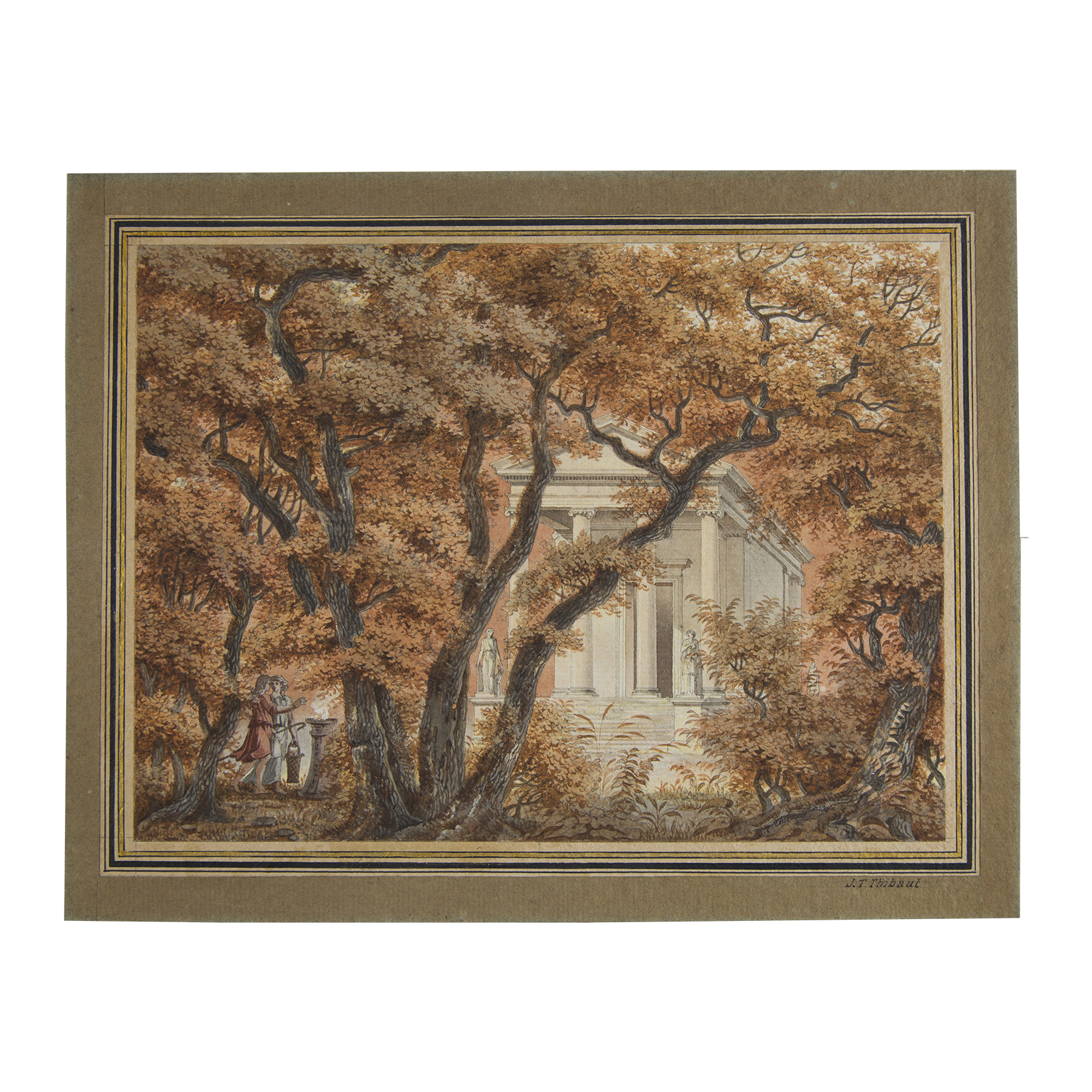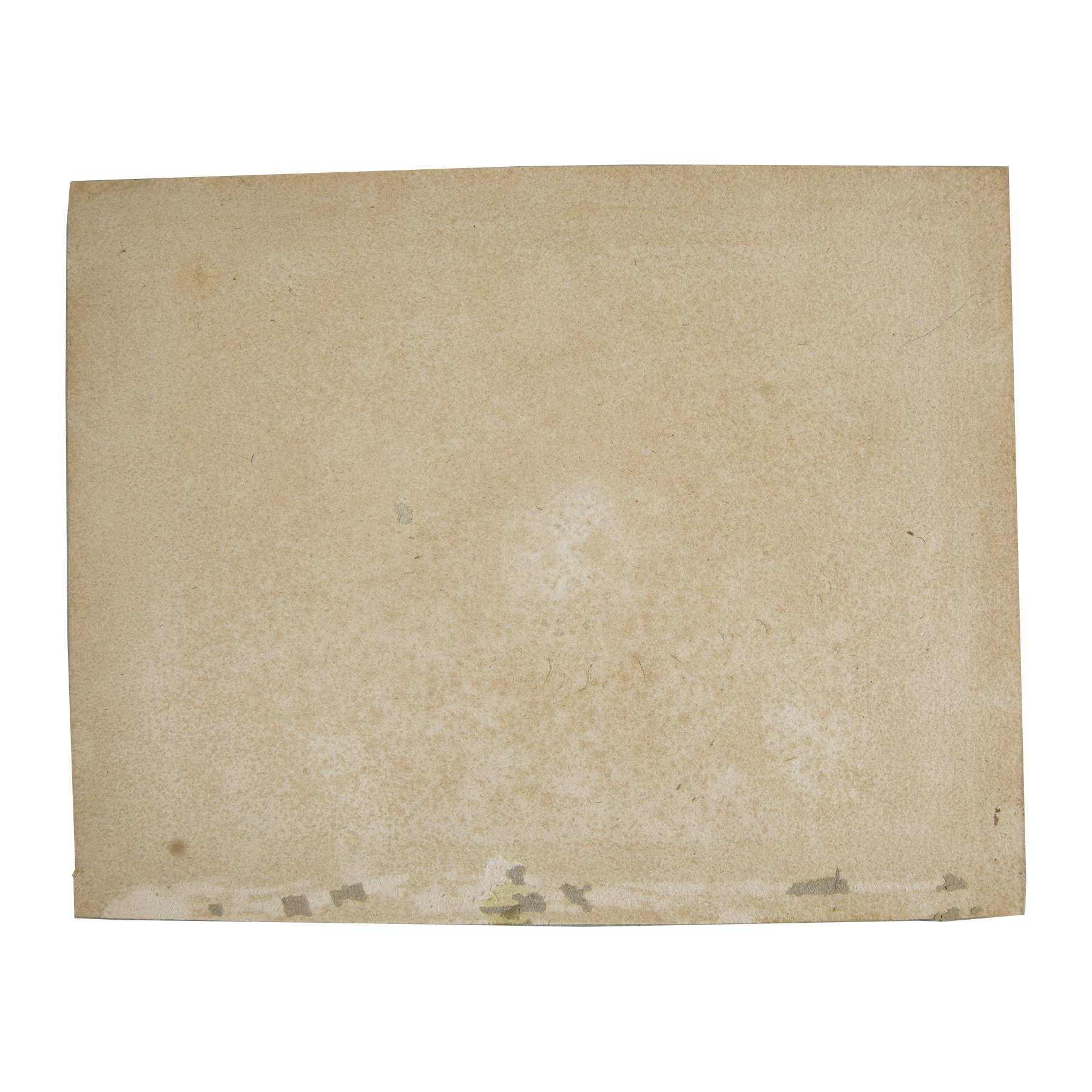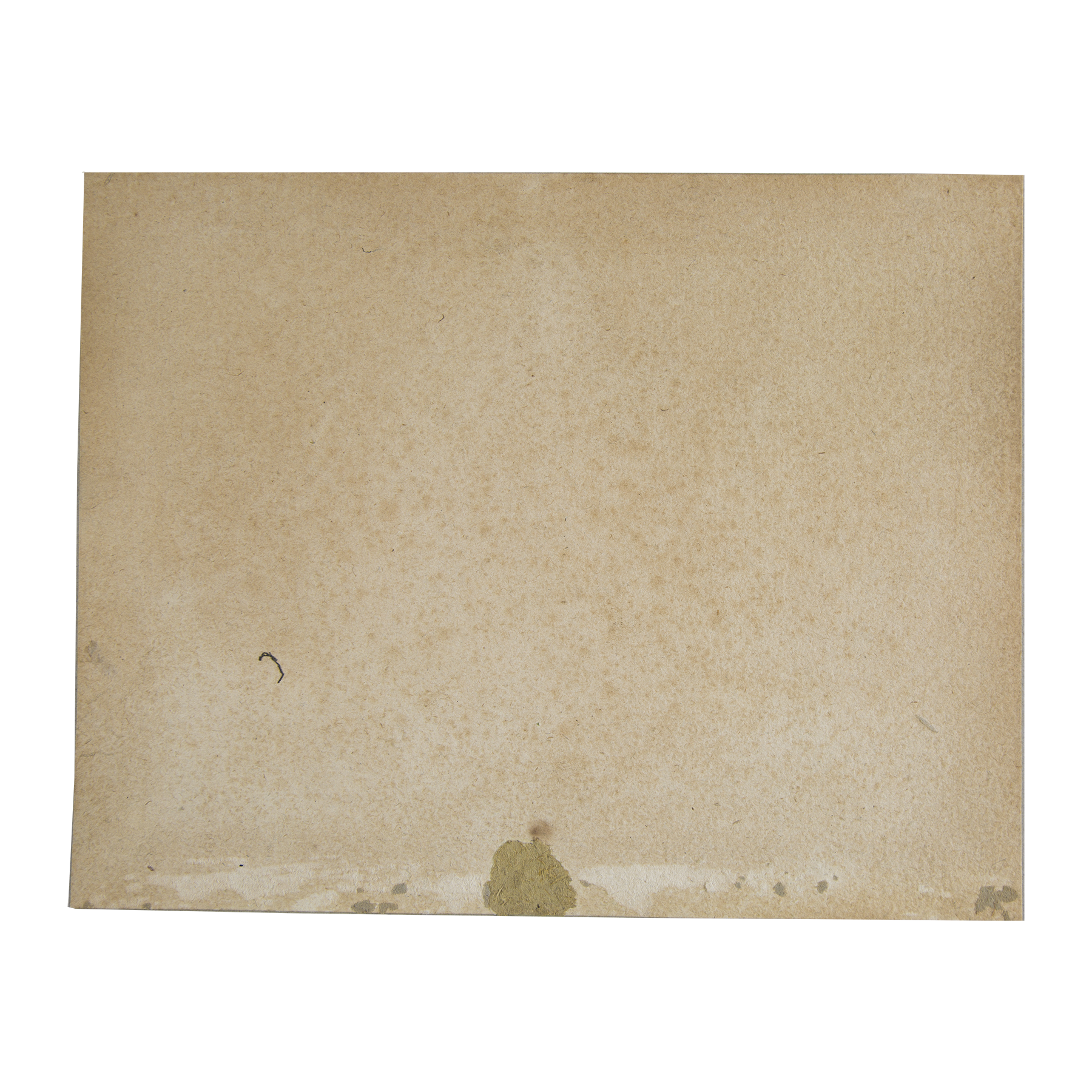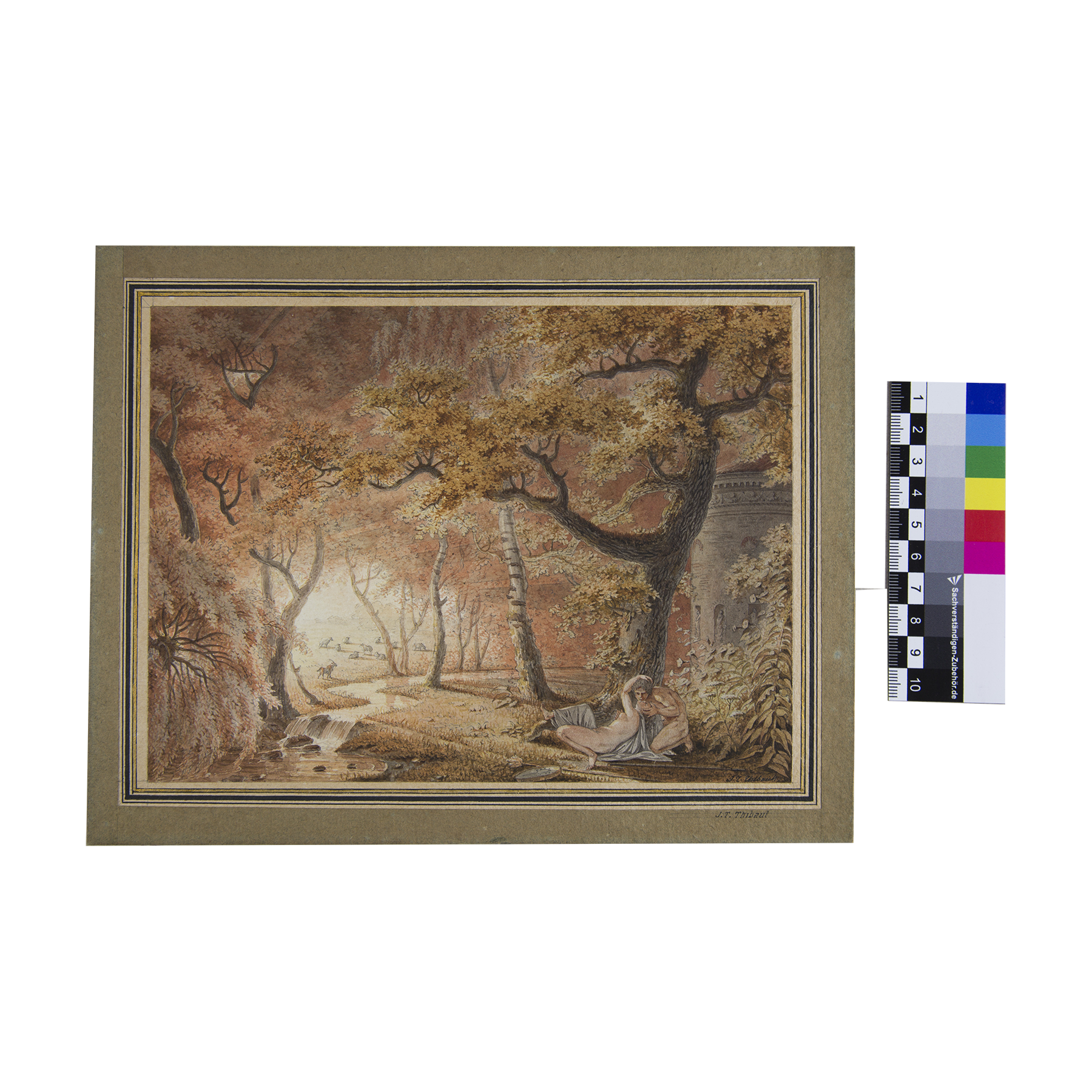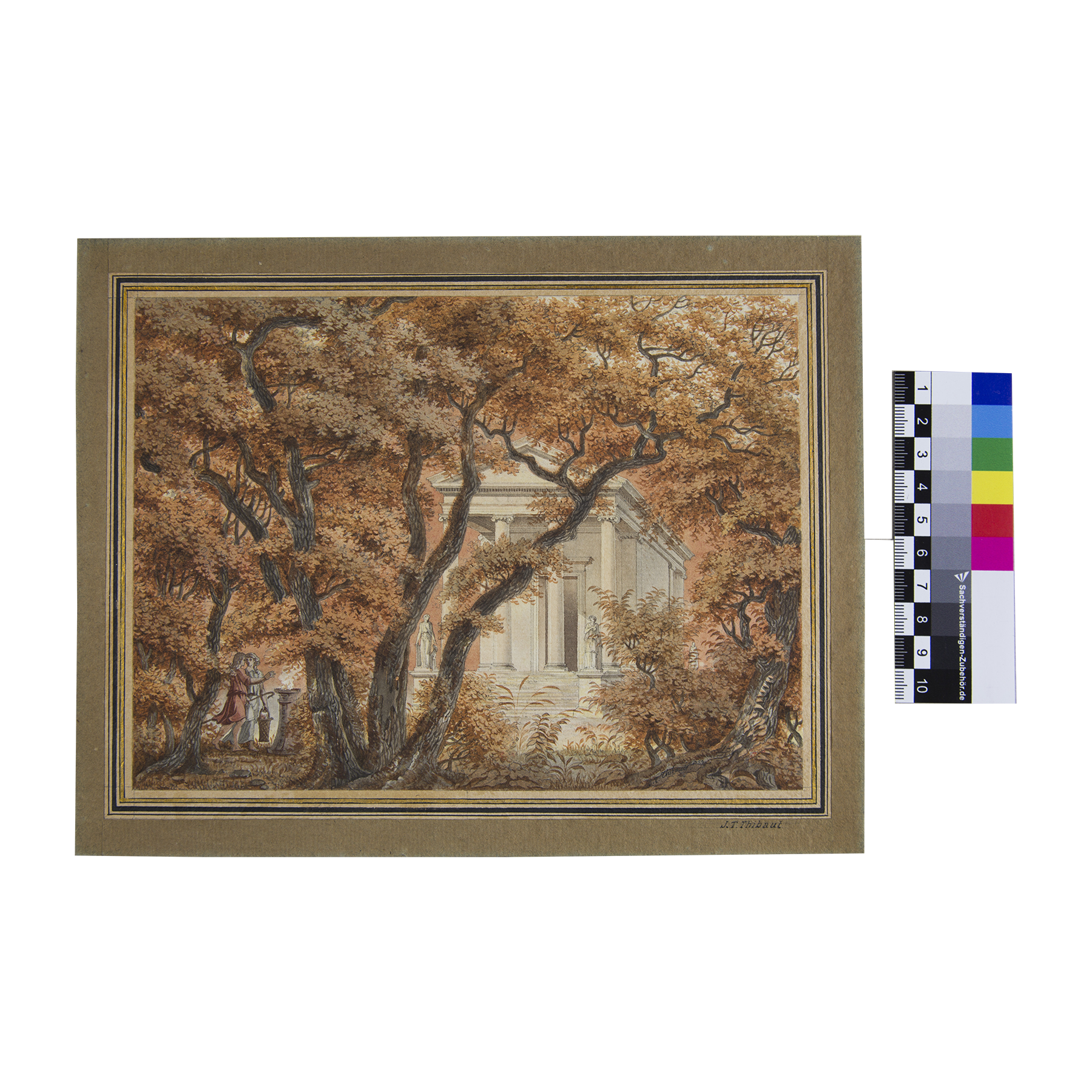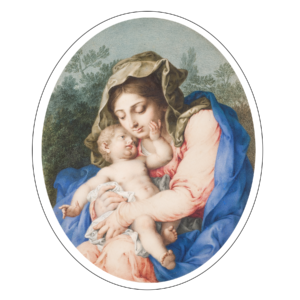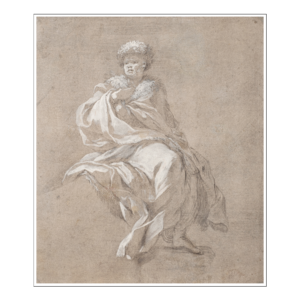Jean Thomas Thibault
Montier-en-Der, 1757 – Paris, 1826
Pair of architectural and animated landscapes
Gray and brown ink with red chalk wash.
153 x 208 mm & 154 x 208 mm – 6 1/32 x 8 3/16 in. & 6 1/16 x 8 3/16 in.
Signed J.T.Thibaut lower right and one dated 1789.
Annotated J.T.Thibaut lower right on the mount.
Jean-Thomas Thibault, born November 20, 1757 in Montier-en-Der (Haute-Marne) and died June 27, 1826 in Paris, was an emblematic figure of French art and architecture at the turn of the Enlightenment, the Revolution and the Empire. Initially trained in the rigors of architecture, he distinguished himself with his highly sensitive landscape paintings, which were often relegated to the background of his academic career.
Thibault received a dual education: he first studied at the École gratuite de dessin, before joining the architectural studio of Étienne-Louis Boullée, a major figure in neoclassical utopian architecture. In 1778, he won the competition for the Académie d’architecture, consolidating his promising status in this field, and then travelled to Rome from 1788 to 1792, at his own expense. His stay in Italy was a turning point. There, he not only studied ancient monuments, but also intensively practiced landscape drawing, often in watercolor or wash, a genre he shared with his friends and future collaborators: the architects Charles Percier and Pierre François Léonard Fontaine. It was in contact with light and Roman ruins that he developed the landscape style for which he became renowned as a painter.
Returning to Paris during the revolutionary period, Thibault, with no immediate architectural commissions, devoted himself mainly to painting and drawing. It was during this period that he produced most of his picturesque views of Paris and Italy, characterized by a more romantic and melancholy approach, contrasting with the rigor of his neoclassical architecture.
He was one of the few architects of his time to produce and exhibit paintings and drawings for himself, notably at the Salons of 1795 and 1796. His works show a particular fondness for views of ruins, country scenes and the play of light, in the tradition of neoclassical landscape painters such as Pierre-Henri de Valenciennes. Most of his drawings and washes are now housed in the Musée du Louvre.
Under the Empire, Thibault’s career took a decidedly architectural turn. He became one of the appointed architects to the Bonaparte and Murat families. He was appointed architect of the Château de Neuilly, the Château de la Malmaison (where he designed the grand serre chaude for Empress Josephine) and the Élysée Palace for Joachim Murat. He also worked for the King of Holland, Louis Bonaparte, restoring the Royal Palace in The Hague and the Amsterdam Town Hall.
Despite this intense activity as an architect and administrator (he was a member of the Conseil des Bâtiments Civils), he was recognized for his artistic talents. He was elected member of the Académie des Beaux-Arts (Architecture section) in 1818, and in 1819 became professor of perspective at the École Royale des Beaux-Arts, replacing P.-H. de Valenciennes.
Jean-Thomas Thibault is the posthumous author of an important theoretical treatise, Application de la perspective linéaire aux arts du dessin (published in 1827 by his pupil Chapuis), which testifies to his major role in the artistic and architectural education of his time.
Above all, he is remembered in the history of art as an architect-artist who combined the discipline of construction with the sensibility of landscape.
Our two drawings illustrate the transition from neoclassicism to Romanticism. Classical architecture is invaded by luxuriant nature, in the foreground of which, in the first drawing, a couple of lovers embrace undressed, while in the second drawing, a couple dressed in antique style make an offering on an altar. These drawings date from his trip to Rome.
Condition : Good condition. Mounted on an antique mount.




